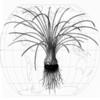| Publication Type: | Journal Article |
| Year of Publication: | 2014 |
| Authors: | J. Jung, Singh, S. Kumar, Pande, H. Chandra, Srivastava, G. Krishna, Choi, H. - K. |
| Journal: | Aquatic Botany |
| Volume: | 113 |
| Pagination: | 1 - 7 |
| ISSN: | 0304-3770 |
| Keywords: | <!– Tag Not Handled –><keyword id="kw0025"><span style='font-style: italic'>LEAFY</span> |
| Abstract: | Abstract Isoëtes dixitei Shende is an endemic plant that grows in the Western Ghats, India. To evaluate the genetic diversity and the population structure of five I. dixitei populations from Maharashtra, we used amplified fragment length polymorphism (AFLP) markers and second intron of \{LEAFY\} sequences. Four AFLP-selective primer combinations generated 756 bands, of which 97% (735) from 154 individuals were polymorphic. In the analysis of the second intron of LEAFY, 103 sequences were generated and three types and 91 subtypes were obtained on considering the shared insertions/deletions and sequence similarity. The level of genetic diversity was high based on \{AFLP\} markers (mean Nei's unbiased expected heterozygosity [HE] = 0.207) and the second intron of \{LEAFY\} sequences (HE = 0.293). Estimated genetic differentiation among the populations was relatively low (θB = 0.082 on \{AFLP\} and 0.038 on LEAFY), compared with other Isoëtes species. A substantial amount of gene flow among populations was observed (Nem = 2.566 on \{AFLP\} and 2.855 on LEAFY). Moreover, a positive marginally significant correlation between genetic distances (ΦST) and geographical distances was detected by performing the Mantel test (r = 0.598, P = 0.062) based on \{AFLP\} markers. Isoëtes dixitei populations showed equilibrium of gene flow and genetic drift due to old-standing separation with sufficient gene flow. Two distinct groups were confirmed based on the genetic relationship: one contained two populations of Bhilar tableland (MB) and Wilson point (MW) while the other included three populations of Panchgani tableland (MP), Khingar tableland (MK), and Dandeghar tableland (MD). |
| URL: | http://www.sciencedirect.com/science/article/pii/S0304377013001472 |
| DOI: | 10.1016/j.aquabot.2013.10.009 |
